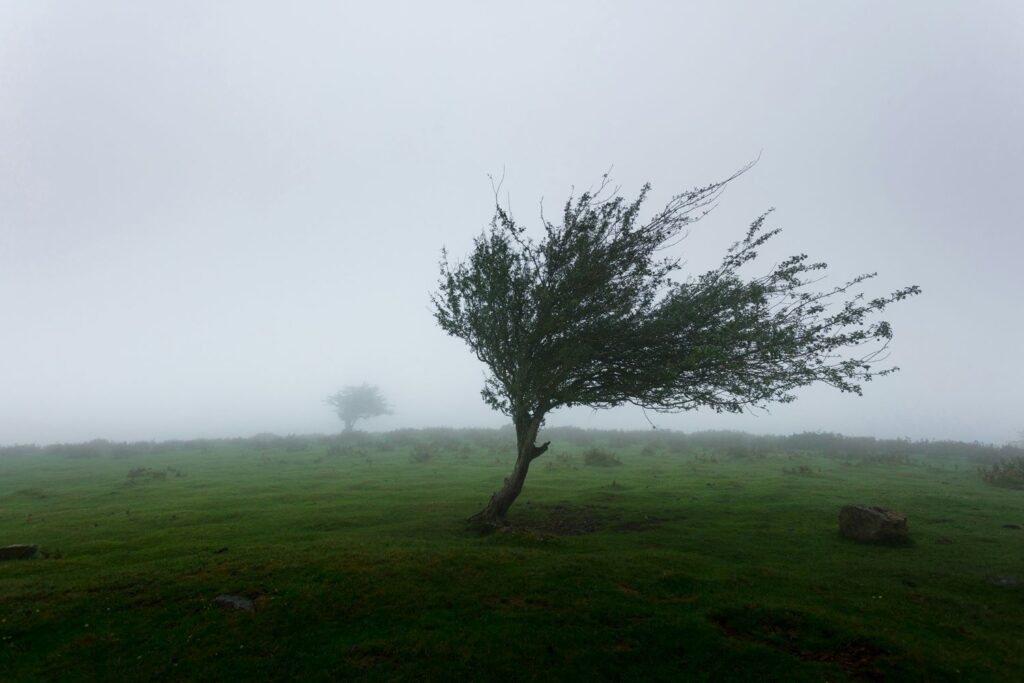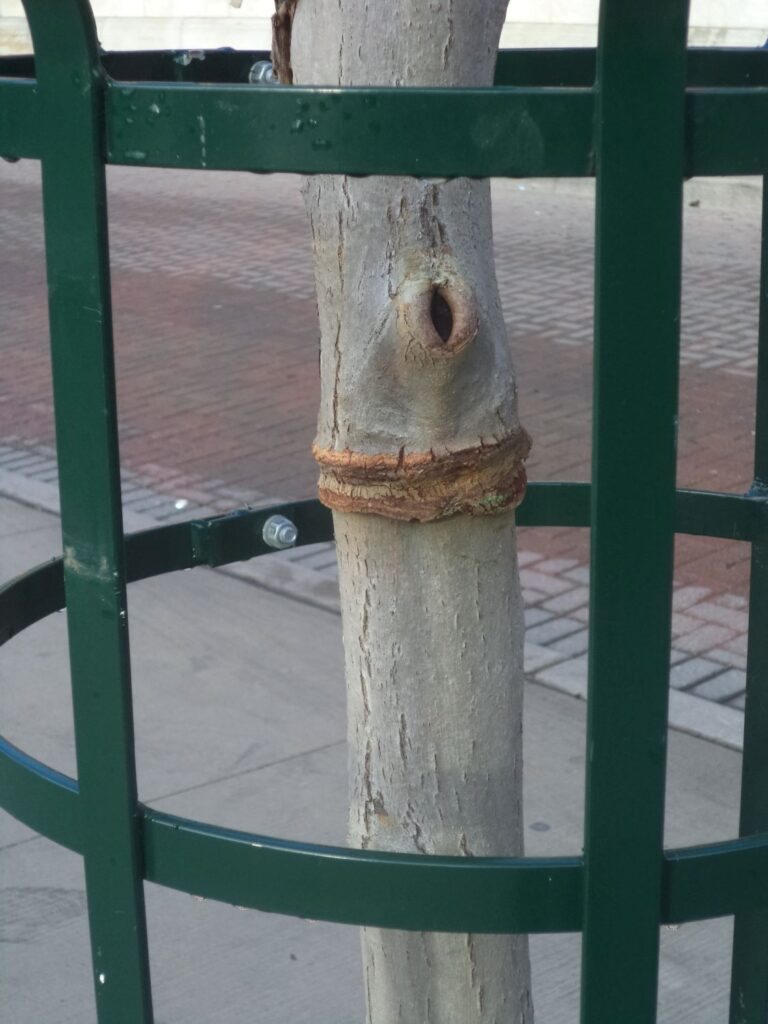“No tree becomes rooted and sturdy unless many a wind assails it. For by its very tossing it tightens its grip and plants its roots more securely; the fragile trees are those that have grown in a sunny valley.”
So said Seneca. He had good observation skills because some 2,000 years later, decades of research confirm the ancient Roman philosopher’s words.
Trees become stronger with movement, much like our bones and muscles become stronger with exercise. And their roots grow faster to better anchor the tree.
That movement comes from the wind.
Staking trees prevents this movement and interferes with the development of a strong tree. It should only be used in some situations.

Grow a stronger tree
When trees move in the wind or bear weight, as in holding branches, they develop reaction wood. One way to observe this wood is in the taper and caliper of the trunk. A tree with good taper in the trunk is thicker on the bottom and tapers upward. A trunk with appropriate caliper is thick enough to support its top and buffet wind stresses.
So when you plant trees, they’re better off un-staked. But there are a few exceptions.
In a spot that receives high winds, newly planted trees may be staked but in a way that still allows movement for the first year or two. In locations that may be subject to high traffic, vandalism threats, or mechanical injury threats, trees may need heavy barriers or grill work to protect them. These are usually in urban situations.
Root growth is better
As Seneca mentioned, a tree’s movement promotes root growth. A tree planted from a container has its roots in what we call a “root ball”. What we want is for the tree to develop its “root system”, because roots grow out from a tree like a dinnerplate around the trunk… not a ball, providing anchoring good anchoring.
When a tree is planted in an area with high winds or with heavy rains or frequent irrigations, the wind may rock the whole tree, root ball and all. If new roots have been growing out into the soil they can get broken by this. In such a case, a clever form of staking to use is called anchor staking where short stakes are used to stabilize the root ball. One way to achieve this staking is to drive three or four short wooden stakes or dowels just outside the root ball and at least one foot into the ground below the root ball. The wood can be left to decompose.
Select trees that can stand on their own
When looking for a tree to plant, select one that can stand without staking. Select a tree that has an appropriate trunk caliper and taper. One that has its lower branches on is best, because they create that reaction wood that makes the trunk strong. And take that bamboo stake off right away because it is affecting the development of the xylem under the stake and actually causes the development of curvature in the trunk!
If you already have a tree that’s too skinny and can’t stand on its own, here are some guidelines for staking and tying to help. One to four stakes may be used. They should be inserted into the ground outside of the root ball.
For ties use flat, smooth straps with some stretch, like green nursery tape, to minimize damage to the young bark. Place them about six inches above the lowest point where the tree will stand upright when the trunk is held and the top one should be at least three feet below the top growing tip. Make sure the trees will still be able to move in the wind.

Stake correctly if you need to
If you must stake a new tree that stands on its own but worries you, do it so the tree still moves in the wind to develop strength. The best way to do this is by installing three stakes around the tree’s root ball. Use a stretchy tie material that connects the stakes, not the tree. This will allow the tree to move in the breezes and wind to build strength. But not go so far that it breaks.
Try to avoid using T-stakes. I know these are the easiest and cheapest to use, but the flange on the bottom end can rip roots when you remove them, if you’re able to move them. At the least, use flange-less T-posts, or better, use wood posts.
Stakes should be left in for only one, or maybe two years. Please don’t forget about them. Not only are forlorn stakes and ties ugly, they can outright kill a tree!
Staking does more harm than good
Staked trees do not develop strong wood. They may be unable to stand upright when the stake is untied. They’re vulnerable to bark injury, or worse, from girdling of ties that are improperly applied or forgotten about. They develop smaller root systems which gives them less anchoring. Their tops buffet more of the wind stresses than un-staked trees because the un-staked trees can distribute the wind stress throughout the whole tree. Staked trees do grow taller faster, but it comes at the expense of good trunk caliper and strength.
For more details and ideas look up Staking and Guying Trees in the Landscape.pdf from the U. of Minnesota.
Further, read Arboriculture, Integrated Management of Trees, Shrubs, and Vines, Fourth Ed.* (Harris et. al., 2004) Chapter 8.
Featured photo credit: Jason Leung on Unsplash
*This is an affiliate link. I highly recommend this book, I’ve read two editions of it. They’re high priced, so look for used copies. I earn a small commission on the sales at no extra cost to you. That helps me continue writing valuable content for you.

